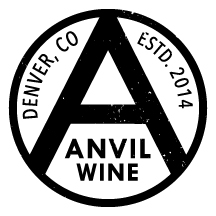Brand
Pfalz
The brothers Brand, Daniel and Jonas, have quickly brought attention to the far northern Pfalz, this cool-climate, limestone-rich, yet otherwise overlooked region. The brothers (along with Andreas Durst) have arguably redefined this place, but that presupposes the place has actually been defined, which is a stretch.
While we are only about five miles south of Keller’s village (Flörsheim-Dalsheim), in this short trip we cross from the Rheinhessen into the Pfalz, from fame to obscurity. The “famous” Pfalz, the Mittelhaardt region, is a good 45-minutes south. Here, however, in the north, in the Brand brother’s village of Bockenheim, well, things are a bit quieter; the historic and gilded estates of the south, with their tended gardens and bustling tourism, give way to a quieter, more gritty, working agricultural feel in the north.
The Brand brothers are, however, electrifying their little town and this forgotten region. And they are doing so with huge smiles, a raucous joy – even downright excitement – in their role as stewards for the land.
It’s a rather curious blend of youthful exuberance, a surplus of energy and an unflappable belief in the future of viticulture in their vineyards, tempered by a maturity that is surprising given their ages (Daniel was born in 1990; Jonas in 1994).
If in some way the brothers, and their unique, crystalline natural wines, seem to have come out of nowhere, there is a context here. Their father, Jürgen, was one of the first advocates for environmentally conscious agriculture, joining an important organic organization in 1994. However, it wasn’t until Daniel came into the winery in 2014 that they made the transition to organic viticulture. Starting with vintage 2018, they are certified organic. They are also pursuing parts of the biodynamic philosophies, with the very real desire to understand and integrate its principles, without necessarily blindly following the ideology. The brothers, for their own parts, have worked with a bevy of “who’s who” producers including Lise and Bertrand Jousset in the Loire, and Alwin Jurtschitsch in Austria’s Kamptal.
For what it’s worth, we’ve seen few vineyards that are as wild, that so proudly flaunt their flora and fauna – it makes the trips through the vineyards something like a garden tour.
The liters – these are wines of internal, brightness, purity and zzziiiinnnnng. They still fascinate and delight; there are few better deals in wine.
In recent years, the Brand brothers have quietly experimented more and more with zero-sulfur winemaking. Some were, right from the start, nearly perfect. The Pet-Nats are riveting, ultra-light testaments to what this region is capable of; in the already-saturated world of Pet-Nat, they have a dedicated following and disappear quickly. The rather long and eccentric list of zero-sulfur “Pur” wines that the brothers first released with vintage 2018, reflects a lot of experimenting, both in the vineyards and in the cellars. It is still a work in progress, though a number of wines are already sure-footed and captivating, unique testaments to a world beyond Riesling. The “Wildersatz” field blend is saline and lemon pith; it is as vibrant as spring water. The Pinot Blanc Pur is classic, the high-toned florality and rounded curves flaunting the inherent breed of the grape. The “Cuvée Flora,” an old-vine Dornfelder cuvee, is riveting. An inky, jet-black red with the soul of an herbal red from the Loire, with all that moist dark soil, stones and herbal fruit.
Nothing of what the brothers is doing is simple, or easy to explain, or, for that matter, sound in judgement. Spending so much time cultivating an old-vine parcel of Dornfelder is idiocy, when you consider how easy it would be to plant more Riesling and feed that market (which in places other than the U.S., is very strong).
But easy, logical decisions rarely make for soulful wines. And so here we are, and here you are. More than most estates, reading about all the different Brand bottlings is worth doing, and you can do so here.

